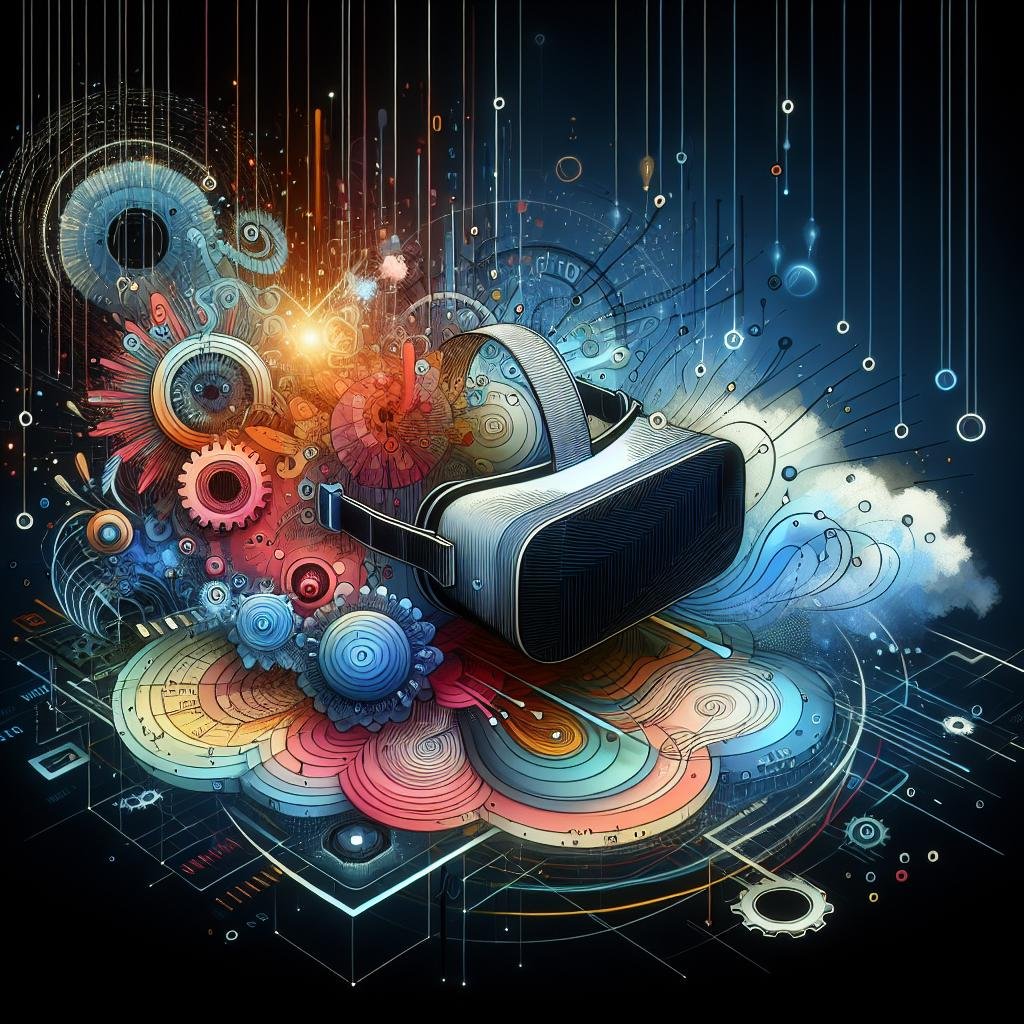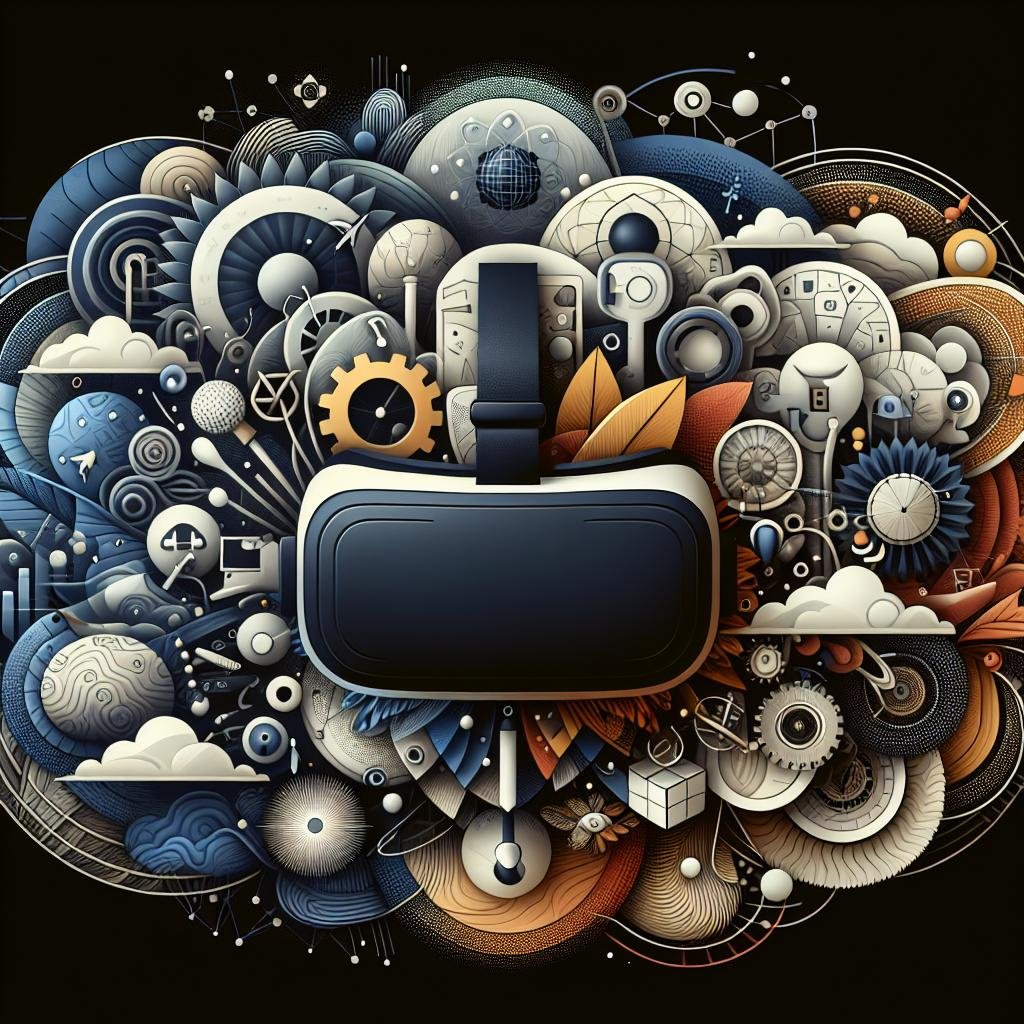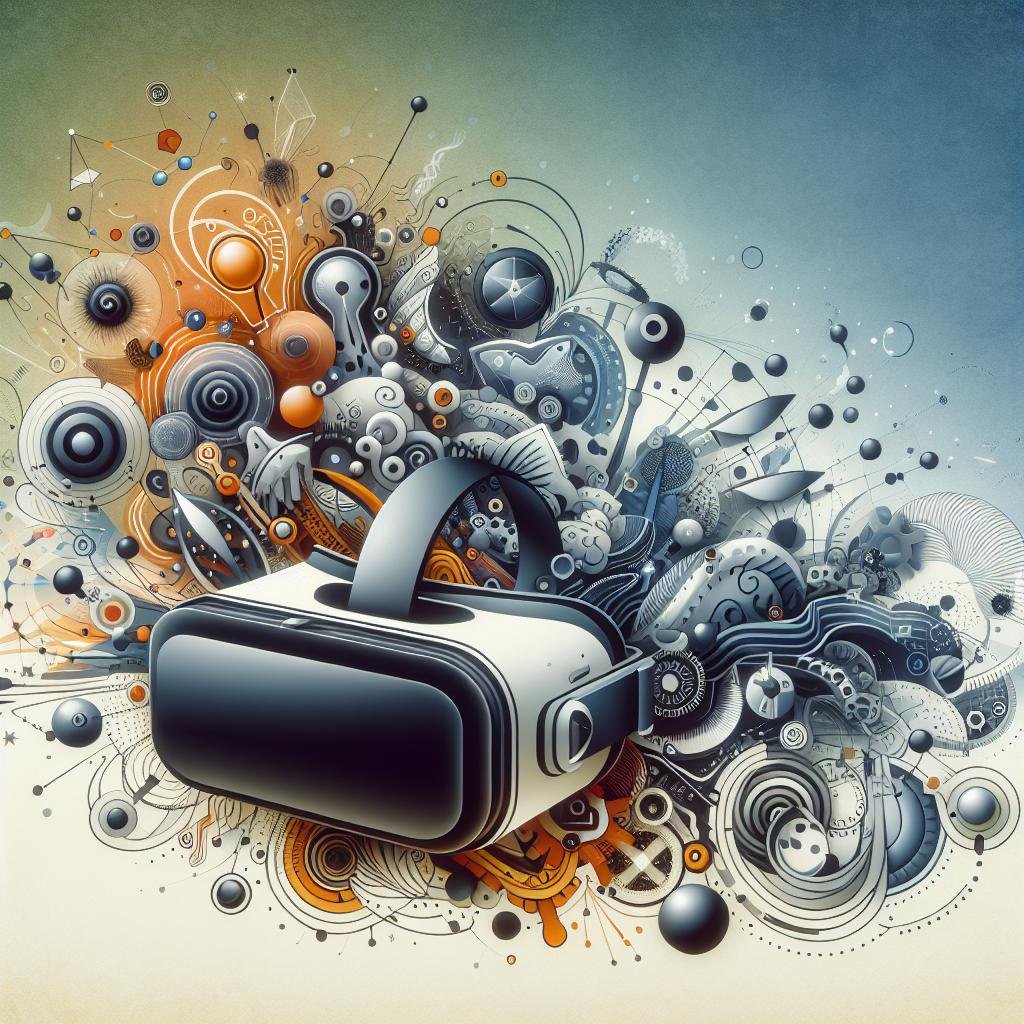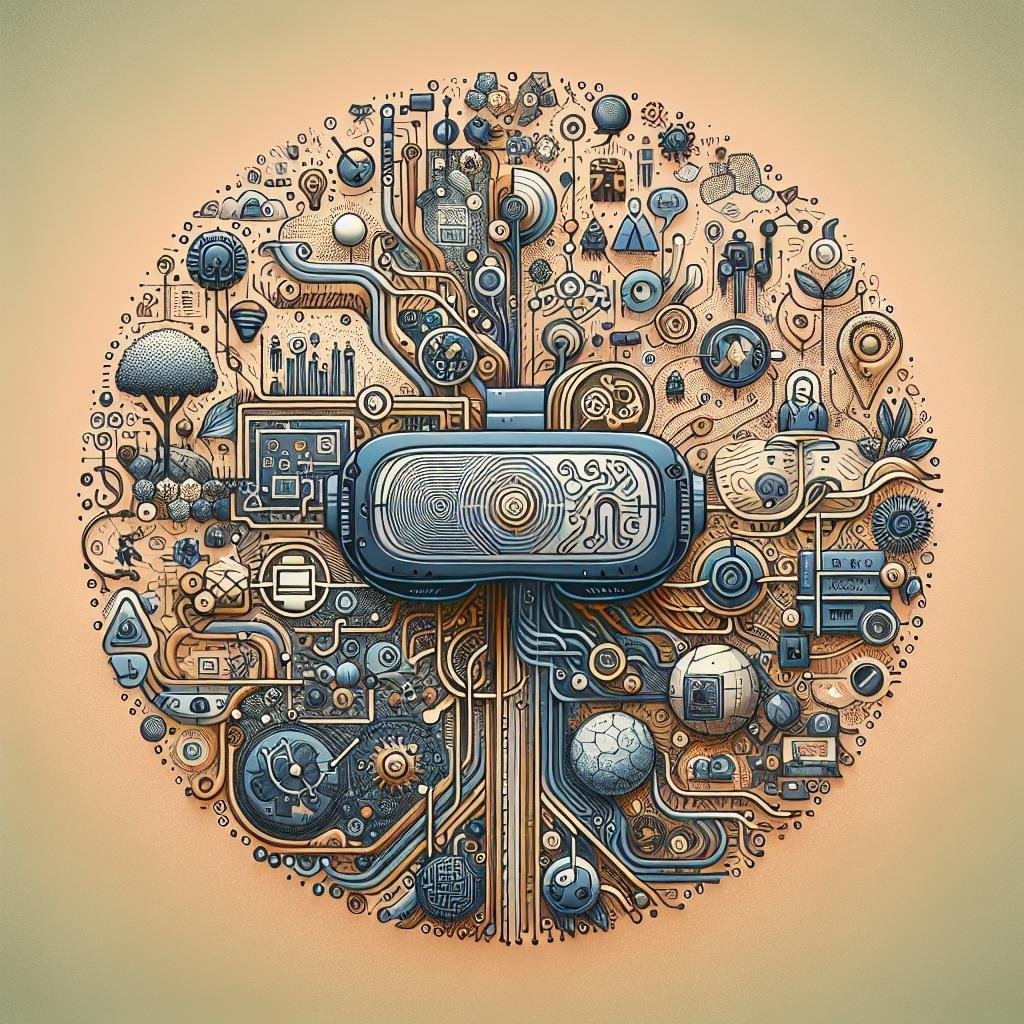How Does a VR Headset Work? Unveiling the Magic Behind Virtual Reality
Welcome to the fascinating world of virtual reality, where the lines between the real and the imaginary blur, and adventures await at the click of a button. You’re about to embark on a journey to explore one of modern technology’s most captivating creations: the VR headset. Ever wondered how a VR headset works? Well, rest easy; we’re about to delve into this intriguing topic and uncover how these devices transport us to different realms! In this article, we’ll lift the veil on the inner workings of VR headsets, from their intricate designs to the seamless magic that makes virtual reality an unforgettable experience. Whether you’re a tech enthusiast or a curious mind, get ready to have your curiosity piqued and your questions answered on how a VR headset works.
Understanding the Magic: How a VR Headset Works Behind the Scenes
Peering Behind the Digital Veil
Dive into the enigmatic world of virtual reality, where your trusty VR headset acts as your personal teleportation device, whisking you away to fantastical realms with just a flick of your wrist. How does a VR headset work? It all starts with the display nestled inside. When you slip on a VR headset, you’re greeted with two tiny screens, one for each eye. These screens come together to form a single 3D image, creating an illusion so bewitching, it pulls you right into another world. Magnifying lenses strategically placed in front of each screen play a crucial role, curving the displayed images to mimic our natural vision and crafting a lifelike experience. And let’s not forget about the powerful sensors peppered within—accelerometers, gyroscopes, and magnetometers—diligently tracking your every move to ensure that when you look left, your virtual world turns right along with you.
A Symphony of Technologies
The magic doesn’t stop at visual perception; audio cues add a captivating layer of realism. High-quality spatial audio, enveloping you with soundscapes from all angles, is what truly sets a VR experience apart. How does a VR headset work its acoustic wonders? It utilizes advanced audio engines, crafting a directional sound so precise, you’ll feel the roar of a dragon emerge from the depths or a whisper brushing past your ear. Consider these fascinating components:
- Displays: OLED and LCD screens optimized for fast refresh rates and higher resolutions.
- Tracking: Inside-out or outside-in tracking for pinpoint accuracy.
- Controls: Handheld controllers and even gloves to manipulate the virtual world.
To put it simply, there’s a harmonious blend of intricate technology constantly working behind the scenes to breathe life into the matrix you explore. Indeed, each VR headset is a testament to human ingenuity, ensuring that with every session, we tread a little further into the realms of the extraordinary.
The Heart of Immersion: Examining the Key Components of VR Headsets
The Heart of Immersion: Understanding the Magic Behind VR Headsets
In the realm of virtual reality, headsets serve as the primary vessel through which users are transported to otherworldly experiences. The magic begins with the displays—typically one for each eye—creating a stereoscopic effect that tricks the human brain into perceiving depth. Advanced algorithms work tirelessly in the background, adjusting the visuals instantly as you move, thanks to a small but powerful sensor known as the gyroscope. This continuous updating simulates a natural viewing environment, convincing your brain that you’re walking through an enchanted forest or exploring the ocean’s depths. Perhaps the unsung hero of this ensemble is the interpupillary distance (IPD) adjustment, ensuring that the screen aligns perfectly with your eyes for maximum comfort and immersion.
Beyond the senses of sight and spatial awareness, audio plays a crucial role in enhancing the realism that VR headsets provide. The 3D sound technology skillfully crafts a soundscape that transforms noises into directional cues. Imagine hearing rustling leaves behind you or a whisper in your ear. The virtual realm becomes a 360-degree garden of sounds, elevating the immersive experience. Complementing this sensory symphony are haptic feedback mechanisms, delivering physical sensations that mimic real-life touch—the gentle vibration when you catch a virtual ball or the rumble of a passing train. This intricate orchestra of sensory components works harmoniously to create an experience so compelling, your brain has no choice but to be captivated.
- Displays - Individual screens for each eye to create a stereoscopic view.
- Gyroscope – A sensor adjusting visuals based on head movement.
- IPD Adjustment – Aligns screens for clear and comfortable vision.
- 3D Sound – Immersive audio creating a 360-degree soundscape.
- Haptic Feedback – Delivers physical sensations to mimic touch.
| Component | Function |
|---|---|
| Displays | Create a stereoscopic experience |
| Gyroscope | Enables motion tracking |
| IPD Adjustment | Aligns visual comfort |
| 3D Sound | Immersive auditory experience |
| Haptic Feedback | Simulates touch sensations |

Navigating Virtual Landscapes: How a VR Headset Creates a New Reality
Exploring Depth and Dimension
Imagine diving into a world where the boundaries of reality fade, and you can explore new dimensions, all from the comfort of your home. This transformative experience is made possible through the brilliance of virtual reality headsets. A VR headset transports users to a digital world by displaying images for each eye, creating a stereoscopic effect that mimics real-life depth and perspective. By utilizing advanced sensors, these headsets track your head movements in real-time, ensuring that the video displayed moves in sync with your gaze, offering a fully immersive experience. Screens spaced just millimeters away from your eyes generate a field of view that envelopes your surroundings, while the audio dynamics create a soundscape that complements the visuals.
Technological Marvels Behind VR Experiences
The synergy of various components makes a VR headset a marvel of modern technology. From motion sensors that sync movements to haptic feedback systems creating touch sensations, the integration is seamless. Here’s a brief look at essential features that make this work:
- Stereoscopic Displays: Separate images for each eye create depth perception.
- Gyroscopic Sensors: Capture rotational data to adjust the view as you move.
- Accelerometers: Detect subtle shifts and adjust perspectives accordingly.
- Graphic Processing Units (GPU): Ensure high-quality, smooth visuals.
| Feature | Function |
|---|---|
| Eye Tracking | Enhances realism by adjusting focus based on where you look. |
| Room-Scale VR | Allows users to move around physically in a designated area. |
So, while VR headsets transform data into dynamic realities, they open the door to an awe-inspiring realm limited only by your imagination.
Expert Tips: Choosing the Right VR Headset for an Unforgettable Experience
Understand Display Quality and Field of View
When delving into the world of virtual reality, it’s crucial to understand how does a VR headset work in terms of display quality and field of view. A high-resolution display ensures a clearer, more realistic image, reducing motion sickness and enhancing immersion. Ideally, look for a headset that offers at least 1080×1200 per eye, though higher resolutions are becoming standard. The field of view, measured in degrees, determines how much of the virtual world you can see at once. A wider field of view, typically around 110 degrees, is recommended for a more captivating experience. Be aware of various display technologies like OLED and LCD, as each has its strengths in color accuracy and brightness.
Check Compatibility and Comfort
The best VR experiences start with a headset that’s both compatible with your setup and comfortable to wear. Understanding how a VR headset works with different platforms—be it PC, gaming consoles, or standalone devices—is crucial. Investigate the compatibility specifications to ensure seamless integration. Comfort is just as important; remember, the longer you wear the headset, the better it should feel on your head. Features to consider include:
- Adjustable straps for a custom fit
- Ample padding to prevent discomfort
- Lightweight design to reduce fatigue
A balance between these factors will ensure that your journey into VR is as enjoyable as it is unforgettable.
| Feature | Consideration |
|---|---|
| Resolution | Minimum 1080×1200 per eye |
| Field of View | Around 110 degrees |
| Display Type | OLED vs LCD |
Q&A
Title: Unlocking the Magic: How Does a VR Headset Work?
Q1: What exactly is a VR headset?
A1: Great question! At its heart, a VR (Virtual Reality) headset is your personal portal to different worlds. It’s a wearable gadget that covers your eyes and transports you into immersive digital environments, whether you’re exploring the depths of the ocean or soaring through space. It’s like having a front-row ticket to a universe where the rules of physics are lovingly ignored!
Q2: How does a VR headset create these virtual experiences?
A2: Think of it as a hi-tech illusionist. The headset’s magic lies in its displays and sensors. Built-in screens for each eye trick your brain into seeing a 3D space. The headset follows your movements using gyroscopes and accelerometers, so when you twist and turn, the virtual world moves with you. It’s like having a superpower where you dictate reality with just a nod or a glance!
Q3: What are the components that make a VR headset function?
A3: VR headsets are packed with tech! They have high-resolution displays that create crystal-clear images. Lenses focus these images for your eyes, adjusting for depth and distance—like having eagle vision! Audio components provide immersive sound, adding to the realism. Plus, they have sensors and often external cameras or controllers to track your movements. All this tech works in harmony to transport you to fantastic realms.
Q4: Do I need a computer or a console to use a VR headset?
A4: Not always! Some headsets, like the Oculus Quest, are standalone and come with their own processing power, so no extra devices are needed. Others, like the Oculus Rift or PlayStation VR, require a beefy computer or console to render the intense graphics your adventures demand. It depends on how far down the rabbit hole you wish to go with your VR journey!
Q5: Can VR headsets be used for things other than gaming?
A5: Absolutely! While gaming is hugely popular, VR’s versatility shines in other fields too. It’s being used in education to bring lessons to life, in medicine for training simulations, in real estate for virtual tours, and even in meditation apps for peaceful escapes. It’s a playground for the imagination, offering endless lifestyle and professional opportunities!
Q6: Are there any downsides or things to be mindful of when using a VR headset?
A6: As with many technologies, a little mindfulness goes a long way! Some folks might experience motion sickness or eye strain after prolonged use. It’s wise to take breaks and gradually ease into longer sessions. Also, ensuring your physical play area is clear is crucial to avoid unintentional knockdowns—no one wants to be the ‘VR ninja’ who trips over the coffee table!
Q7: How does the future of VR headsets look?
A7: The future of VR is bright and full of potential! As technology advances, VR headsets are becoming lighter, more comfortable, and incredibly realistic. With innovations in haptic feedback and eye-tracking, the line between the virtual and real is only growing thinner, promising ever more breathtaking experiences. Who knows? We might soon be able to virtually cavort with dinosaurs or perform on a far-off alien planet!
There you go! Next time you put on a VR headset, you’ll know a bit more about the wizardry involved in your digital adventures. Dive in and enjoy the ride!
In Summary
As we slowly remove the virtual headsets and return to the rhythm of reality, it’s clear that the world enveloped behind those lenses is both marvelously intricate and wonderfully accessible. From the hum of electronic whispers that syncs with our movements to the stunning kaleidoscope of visuals that transport us elsewhere, understanding how VR headsets function makes the experience all the more magical. Whether you’re diving into crystal-clear oceans, navigating alien landscapes, or simply sitting courtside at a basketball game, the blend of cutting-edge technology and human imagination is what paints these virtual journeys with such vibrant strokes.
So, the next time you slip on a VR headset, take a moment to appreciate the orchestra of components and code that works in harmony to carve out your alternate realities. With each seamless turn of your head or outstretched arm, you’re witnessing the future—both intricate and exhilarating, inviting and boundless—one pixel at a time. Here’s to endless adventures in the world of ones and zeros, where every blink and beat propels new stories and dreams. Until next time, when curiosity leads you into another digital odyssey, happy exploring!

